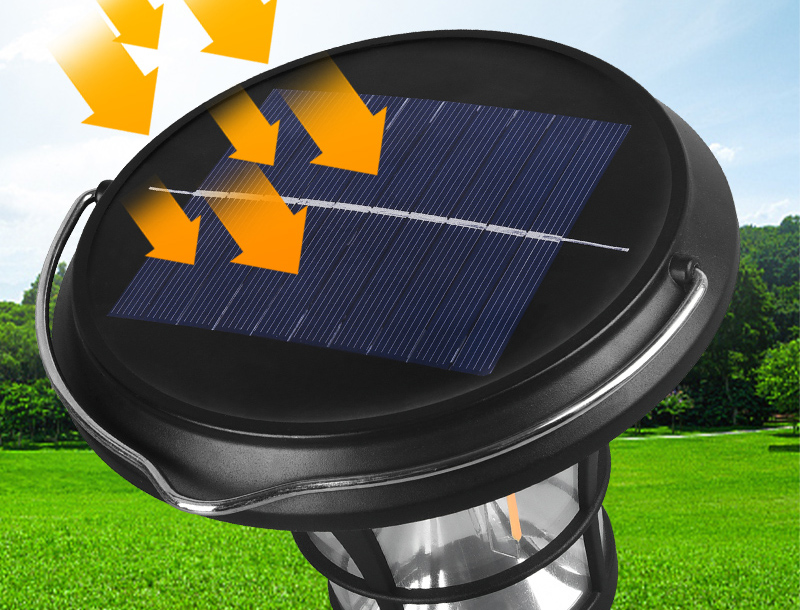Silicon material is the most basic and core material in the semiconductor industry. The complex production process of the semiconductor industry chain should also start from the production of basic silicon material.
Monocrystalline silicon solar garden light
Monocrystalline silicon is a form of elemental silicon. When molten elemental silicon solidifies, the silicon atoms are arranged in diamond lattice into many crystal nuclei. If these crystal nuclei grow into grains with the same orientation of crystal plane, these grains will be combined in parallel to crystallize into monocrystalline silicon.
Monocrystalline silicon has the physical properties of a quasi-metal and has weak electrical conductivity, which increases with increasing temperature. At the same time, monocrystalline silicon also has significant semi-electrical conductivity. Ultra-pure monocrystalline silicon is an intrinsic semiconductor. The conductivity of ultra-pure monocrystal silicon can be improved by adding trace ⅢA elements (such as boron), and P-type silicon semiconductor can be formed. Such as the addition of trace ⅤA elements (such as phosphorus or arsenic) can also improve the degree of conductivity, the formation of N-type silicon semiconductor.
Polysilicon is a form of elemental silicon. When molten elemental silicon solidifies under the condition of supercooling, silicon atoms are arranged into many crystal nuclei in the form of diamond lattice. If these crystal nuclei grow into grains with different crystal orientation, these grains combine and crystallize into polysilicon. It differs from monocrystalline silicon, which is used in electronics and solar cells, and from amorphous silicon, which is used in thin-film devices and solar cells garden light
The difference and connection between the two
In monocrystalline silicon, the crystal frame structure is uniform and can be identified by the uniform external appearance. In monocrystalline silicon, the crystal lattice of the entire sample is continuous and has no grain boundaries. Large single crystals are extremely rare in nature and difficult to make in the laboratory (see recrystallization). In contrast, the positions of atoms in amorphous structures are restricted to short-range ordering.
Polycrystalline and subcrystalline phases consist of a large number of small crystals or microcrystals. Polysilicon is a material made up of many smaller silicon crystals. Polycrystalline cells can recognize texture by a visible sheet metal effect. Semiconductor grades including solar grade polysilicon are converted to monocrystalline silicon, meaning that the randomly connected crystals in the polysilicon are converted into a large single crystal. Monocrystalline silicon is used to make most silicon-based microelectronic devices. Polysilicon can achieve 99.9999% purity. Ultra-pure polysilicon is also used in the semiconductor industry, such as 2 – to 3-meter long polysilicon rods. In the microelectronics industry, polysilicon has applications at both the macro and micro scales. The production processes of monocrystalline silicon include the Czeckorasky process, zone melting and Bridgman process.
The difference between polysilicon and monocrystalline silicon is mainly manifested in physical properties. In terms of mechanical and electrical properties, polysilicon is inferior to monocrystalline silicon. Polysilicon can be used as raw material for drawing monocrystalline silicon.
1. In terms of anisotropy of mechanical properties, optical properties and thermal properties, it is far less obvious than monocrystalline silicon
2. In terms of electrical properties, the electrical conductivity of polycrystalline silicon is far less significant than that of monocrystalline silicon, or even almost no electrical conductivity
3, in terms of chemical activity, the difference between the two is very small, generally use polysilicon more
Post time: Mar-24-2023

